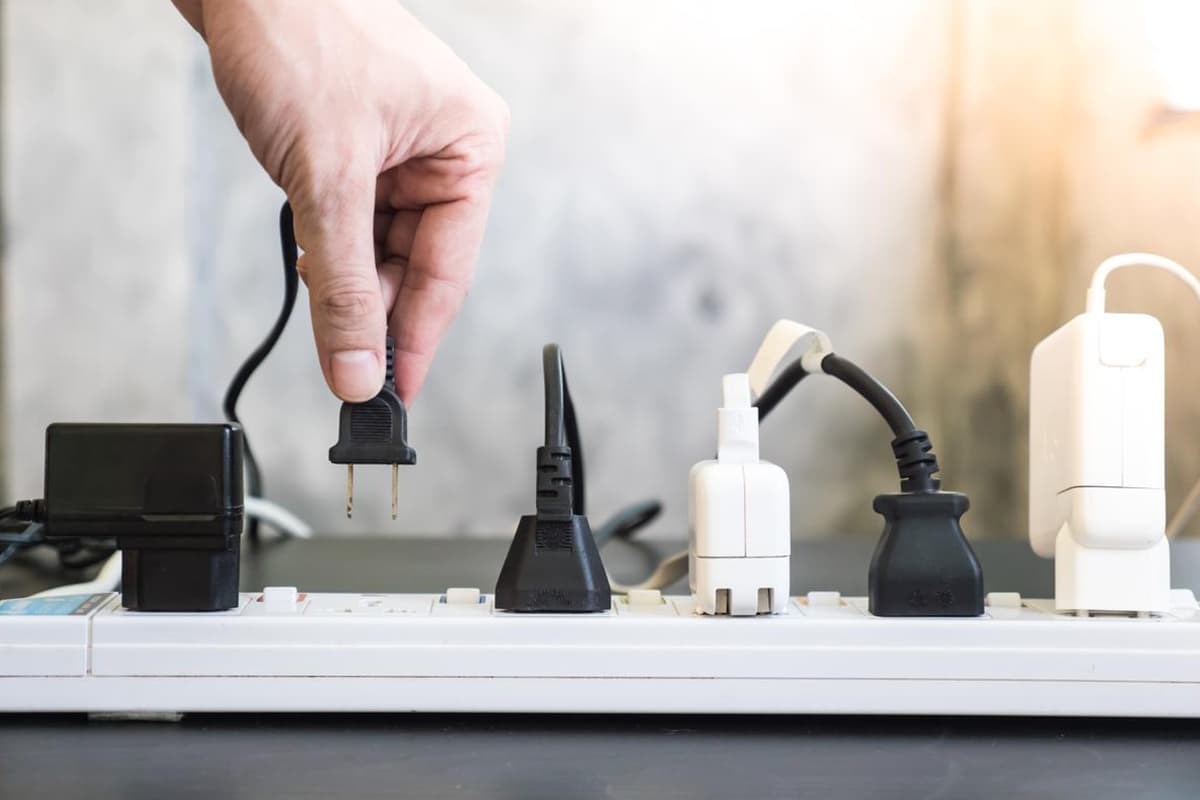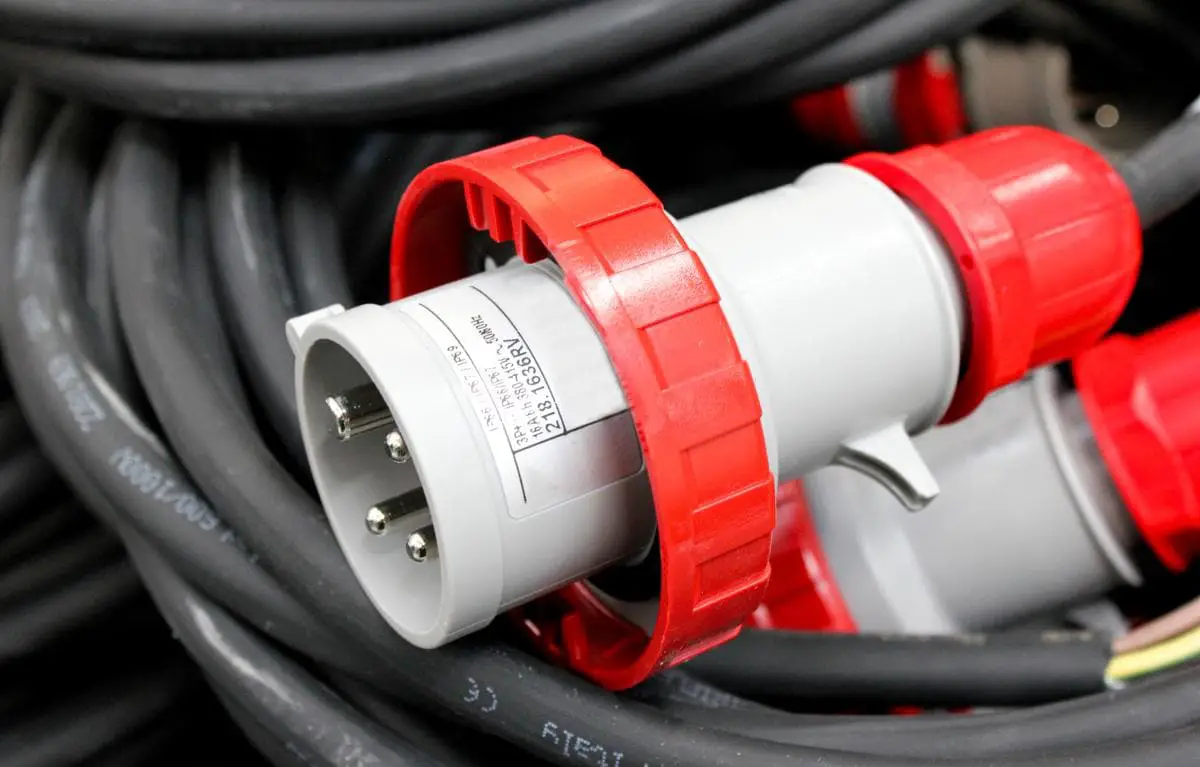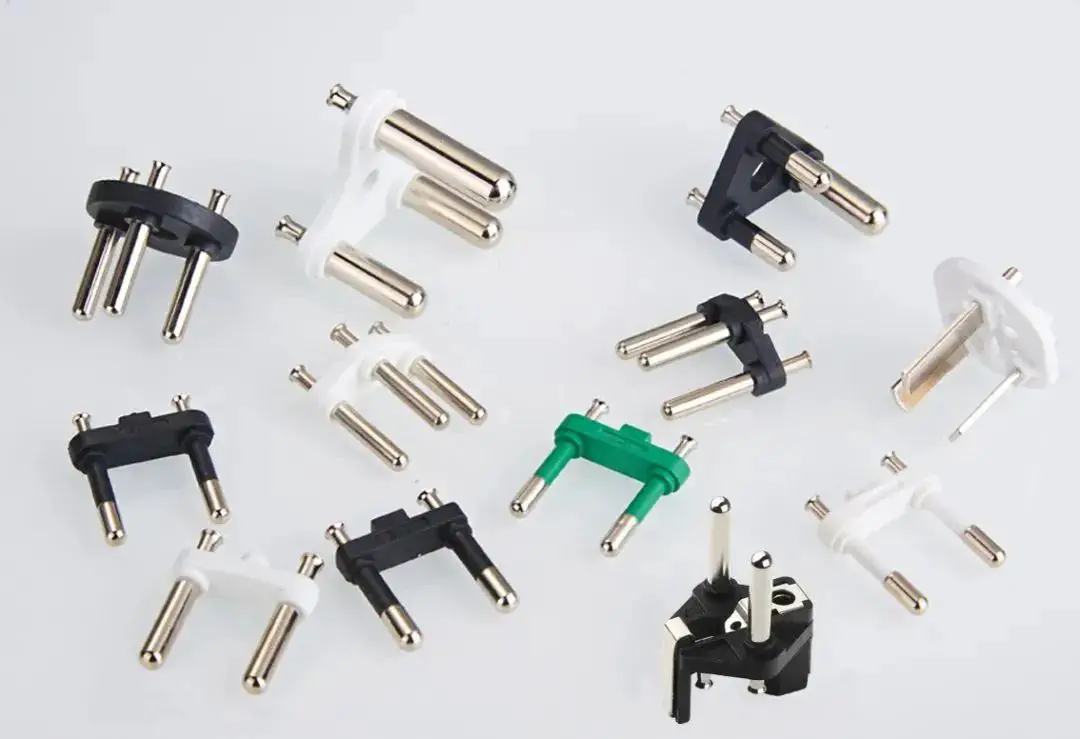
Did you know that there are 15 different types of power plugs used worldwide? Each country has its own standards, making it essential to understand which type you’ll need when traveling or shipping electronics. This article explores the various plug shapes, sizes, and electrical ratings, helping you avoid compatibility issues and ensuring your devices stay powered up safely and efficiently. Read on to learn which plug type corresponds to each region and the importance of using the correct power plug.

A power plug refers to the device that connects appliances and other equipment to the power source.
Power sockets and plugs vary in terms of shape, rating, size, and type, depending on the country or region. Each country has standards set by the government.
Also known as a power cord plug, the power plug is used in various fields and in every country.

Depending on its intended use, a power cord plug can be used with voltages of 250V, 125V, and 36V, and, depending on the current, can be used with 16A, 13A, 10A, 5A, and 2.5A. The frequency is typically 50/60Hz.
Power cord plugs can be roughly classified into converter plugs, injection-molded plugs, and assembly plugs.

Each country has a different standard for power cord plugs. For instance, a plug from China cannot be used in the United States and would require a converter plug for compatibility.
This is where the converter power plug comes in. A converter power plug is designed to convert one country’s standard plug into another country’s standard power cord plug.

An injection molded plug is one where the plug and wire are fused together under high temperature and pressure.
Once formed, it cannot be disassembled. The advantages of such a power plug are quite clear: it’s stable and safe. Over 80% of the power plugs readily available in the market are of this type.

The assembly of a plug involves securing the power cord and the plug together using screws or other fasteners.
However, it can be assembled and disassembled during use, ensuring the flexibility of the power plug. For instance, a significant proportion of the market in the United Kingdom utilizes these types of assembled power plugs.
Currently, there are numerous standards for electrical plugs around the world, including the Chinese standard plug (GB), the American standard plug (US), the European standard plug (EU, DE), the British standard plug (UK), and the South African standard plug (ZA), among others.

The national standard plug is used in China, Australia, New Zealand, and Argentina, characterized by its three flat prongs.
The American standard plug, with one round and two flat prongs, is used in the United States, Canada, Japan, Brazil, the Philippines, Thailand, Taiwan, among other countries.
The British standard plug, featuring three rectangular prongs, is utilized in the United Kingdom, India, Pakistan, Singapore, Malaysia, Vietnam, Indonesia, Maldives, Qatar, Hong Kong, and other regions.
The European (German standard) plug, distinguished by its two round prongs, is utilized in European Union countries like Germany, France, Netherlands, Denmark, Poland, Finland, Norway, Austria, Belgium, Hungary, Spain, Sweden, as well as in South Korea, Russia. The South African standard plug, characterized by its three round prongs, is primarily used in South Africa, India, and Russia.
Additionally, there are other plug types such as the Italian standard (Italian plug) and the Swiss standard (Swiss plug).
| Asia-Pacific Region | ||||
| Country (Region) Name | Voltage | Frequency | Plug Type | Description |
| Japan | 100V | 50,60 | A&B | Two-pin Flat/Two-pin Flat+Round Ground Pin |
| Korea | 220V | 50,60 | E&G | Double Round Pin |
| Hong-Kong | 220V | 50Hz | I | Three-pin Flat |
| Macau | 220V | 50Hz | E&G | European Specification Double Round Pin |
| Australia | 240V | 50Hz | C&D | Figure-8 Type |
| New-Zealand | 220V | 50Hz | C&D | Figure-8 Type |
| Vietnam | 120/220V | 50Hz | A,B, E&G | Double Round Pin and Shoulder Type |
| Thailand | 220V | 50Hz | A&E | Two-pin Flat/Two-pin Flat+Round Ground Pin |
| Malaysia | 230V | 50Hz | I | Three-pin Flat |
| Singapore | 220V | 50Hz | I | Three-pin Flat |
| Philippines | 220V | 50Hz | A&E | Two-pin Flat/Two-pin Flat+Round Ground Pin |
| Indonesia | 220V | 50 | E&G | Double Round Pin |
| India | 230V | 50 | I&L | Three-pin Flat, Three-pin Round |
| Middle Eastern Region | ||||
| Country Name | Voltage | Frequency | Plug Type | Description |
| Russia | 220V | 50Hz | E,F&G | European Standard Round Two-pin |
| Ukraine | 220V | 50Hz | E,F&G | European Standard Round Two-pin |
| SaudiArabia | 127 and 220V | 60Hz/50Hz | A,B&I | Flat Two-pin/Flat Two-pin with Ground Pin/British Standard Flat Three-pin |
| Jordan | 220V | 50Hz | I | British Standard Flat Three-pin |
| Iraq | 220V | 50Hz | E&I | European Standard Round Two-pin/British Standard Flat Three-pin |
| Syria | 220V | 50Hz | E,F&N | European Standard Round Two-pin/Italian Standard Round Three-pin |
| Lebanon | 220V | 50Hz | E | European Standard Round Two-pin |
| Kuwait | 220-240V | 50Hz | E&I | European Standard Round Two-pin/British Standard Flat Three-pin |
| Israel | 220-240V | 50Hz | E&P | European Standard Round Two-pin/Israeli Standard |
| Bahrain | 220V | 50Hz | I&K | British Standard Triangular Flat |
| Dubai | 220V | 50Hz | G | European Standard Round Two-pin |
| Turkey | 220V | 50Hz | E&F | European Standard Round Two-pin |
| European Region | ||||
| Country Name | Voltage | Frequency | Plug Type | Description |
| Italy | 220-230V | 50Hz | E&N | Italian Standard Tripod Round |
| European Standard Bipod Round | ||||
| Austria | 220V | 50Hz | E,F&G | European Standard Bipod Round |
| CzechRep. | 220V | 50Hz | E,F&G | European Standard Bipod Round |
| Poland | 220V | 50Hz | E,F&G | European Standard Bipod Round |
| Hungary | 220V | 50Hz | F&G | European Standard Bipod Round |
| Greece | 220V | 50Hz | E,F&G | European Standard Bipod Round |
| Belgium | 220V | 50Hz | E,F&G | European Standard Bipod Round |
| Netherlands | 220V | 50Hz | E,F&G | European Standard Bipod Round |
| Luxembourg | 220V | 50Hz | E,F&G | European Standard Bipod Round |
| UnitedKingdom | 220-240V | 50Hz | I | British Standard Tripod Flat |
| Ireland | 220V | 50Hz | I | British Standard Tripod Flat |
| France | 220V | 50Hz | E,F&G | European Standard Bipod Round |
| Switzerland | 220-224V | 50Hz | E&M | Swiss Standard Tripod Round |
| European Standard Bipod Round | ||||
| Spain | 220V | 50Hz | E,F&G | European Standard Double-legged Round Type |
| Portugal | 220V | 50Hz | E,F&G | European Standard Double-legged Round Type |
| Germany | 220V | 50Hz | E,F&G | European Standard Double-legged Round Type |
| Norway | 220V | 50Hz | E,F&G | European Standard Double-legged Round Type |
| Finland | 220V | 50Hz | E,F&G | European Standard Double-legged Round Type |
| Dermark | 220V | 50Hz | E,F&G | Danish Standard Triple-legged Round Type/European Standard Double-legged Round Type |
| Sweden | 220V | 50Hz | E,F&G | European Standard Double-legged Round Type |
| Latvia | 220-240V | 50HzE | E&F | Figure-Eight Type/European Standard Double-legged Round Type |
| S1ovakRep | 220V | 50Hz | E,F&G | European Standard Double-legged Round Type |
| North American Region | ||||
| Country Name | Voltage | Frequency | Plug Type | Description |
| UnitedStates | 120V | 60 | A&B | Flat-foot Type/Double Flat + Round Ground Feet |
| Canada | 110V | 60 | A&B | Double Flat Type/Double Flat + Round Ground Feet |
| Central and South America regions | ||||
| Country Name | Voltage | Frequency | Plug Type | Description |
| Mexico | 127V | 60 | A&B | Flat two-prong/Flat two-prong + round grounding prong |
| Nicaragua | 110V | 60 | A&B | Flat two-prong/Flat two-prong + round grounding prong |
| E1Salvador | 110V | 60 | A&B | Flat two-prong/Flat two-prong + round grounding prong |
| Honduras | 110V | 60 | A&B | Flat two-prong/Flat two-prong + round grounding prong |
| Nicaragua | 110V | 60 | A&B | Flat two-prong/Flat two-prong + round grounding prong |
| CostaRica | 110-120V | 60 | A&B | Flat two-prong/Flat two-prong + round grounding prong |
| Panama | 120V | 60 | A&B | Flat two-prong/Flat two-prong + round grounding prong |
| Haiti | 110-120V | 60 | A&B | Flat two-prong/Flat two-prong + round grounding prong |
| DominicanRep. | 110V | 60 | A&B | Flat two-prong/Flat two-prong + round grounding prong |
| Columbia | 115V | 60 | A&B | Flat two-prong/Flat two-prong + round grounding prong |
| Venezuela | 110V | 60 | A&B | Flat two-prong/Flat two-prong + round grounding prong |
| Ecuador | 110V | 60 | A&B | Flat two-prong/Flat two-prong + round grounding prong |
| Brazil | 110V/220V | 60Hz/50Hz | A, B&E | American standard flat two-prong (+ grounding prong) |
| European standard double round prong | ||||
| Peru | 110V/220V | 60Hz/50Hz | A,B&E | American standard two-prong flat type (+ grounding prong) / |
| European standard double-prong round type | ||||
| Bolivia | 110V/220V | 60Hz/50Hz | A,B&E | American standard two-prong flat type (+ grounding prong) / |
| European standard double-prong round type | ||||
| Paraguay | 220V | 50Hz | E | European standard double-eyelet round type |
| Uruguay | 220V | 50Hz | E | Three-hole type |
| Argentina | 220V | 50Hz | C&D | Figure-eight type |
| Chile | 220V | 50Hz | E&N | European standard double-prong round type |
| Italian standard three-prong round type | ||||
| African Region | ||||
| Country Name | Voltage | Frequency | Plug Type | Description |
| Rep.SouthAfrica | 220V | 50Hz | K&L | Triangular Round Type |
| Mauritius | 240V | 50Hz | E&I | European Standard Dual Foot Round Type/British Standard Triangular Flat Type |
| Malawi | 240V | 50Hz | I | British Standard Triangular Flat Type |
| BurkinaFaso | 220V | 50Hz | E&F | European Standard Dual Foot Round Type |
| Swaziland | 220V | 50Hz | I | British Standard Triangular Flat Type |
| Senegal | 220V | 50Hz | E,F&G | European Standard Dual Foot Round Type |
| Gambia | 220V | 50Hz | I | British Standard Triangular Type |
| Chad | 220-250V | 50Hz | F,G&L | European Standard Double-Legged Round Type / British Standard Triple-Legged Flat Type |
| Gabon | 220V | 50Hz | G | European Standard Double-Legged Type |
| Ghana | 220V | 50Hz | E,I&K | European Standard Double-Legged Round Type / British Standard Triple-Legged Flat Type |
| EquatorialGuinea | 220V | 50Hz | E&F | European Standard Double-Legged Round Type |
| Nigeria | 230V | 50Hz | I | British Standard Triple-Legged Flat Type |
| Cameroon | 220V | 50Hz | E,F&G | European Standard Double-Legged Round Type |
Power plugs are typically categorized into two-prong, three-prong, and multi-prong power plugs.

2-pin Power Plug:
As the name suggests, a 2-pin power plug has two prongs or two pins. The specifics of the prongs or pins differ according to various national standards. For instance, the Chinese standard uses two prongs, while the European standard uses two round pins.
3-pin Power Plug:
A 3-pin power plug, as you might expect, has three prongs, or three pins, or two prongs or pins plus a grounding hole. This structure is more complex than the 2-pin power plug. The size, diameter, and other standards of the pins are quite demanding. The length and the spacing between the pins are also factors to consider.
Multi-pin Power Plug:
The multi-pin power plug is even more complex. There are 4-pin power plugs, 5-pin power plugs, and so forth. The specific type of plug to be used on a particular device depends on the customer’s requirements and the actual circumstances.
The wiring colors for a three-prong power plug are typically brown, blue, and yellow-green. The brown wire is the live wire, the blue wire is the neutral wire, and the yellow-green wire is the ground wire.
Corresponding to the power cord, the three prongs on a power plug are marked E, L, N. The live wire L is usually on the left, the neutral wire N on the right, and the ground wire E on top. As long as the colors match those on the power cord, the connection is correct.

Common colors for L-core wires are black or brown (also known as tea color). These two colors are commonly used in American and Japanese standards, while brown is used in European standards.
The common colors for N-core wires are white, red, and light blue. These three colors are often used in American and Japanese standards, while light blue is used in European standards.
The common colors for N-core wires are green or green with yellow (also referred to as yellow-green or green-yellow). These two colors are widely used in American, Japanese, and European standards, with many businesses opting for the green with yellow color.
| Wiring | IEC227 | North America | Coordinated System | |
| L pole | Hot Wire | Brown | Black | Brown |
| N pole | Neutral Wire | Blue | White | Blue |
| E pole | Ground Wire | Yellow-green | Green | Yellow/Green |
Where there’s electricity, there’s a power plug.
Power plugs have a wide range of uses in various aspects of our lives and work, especially in industries like home appliances and telecommunications. They are closely related to our daily lives and work.
Understanding the basic knowledge and safety performance of power plugs can ensure the safety of your family and property.








